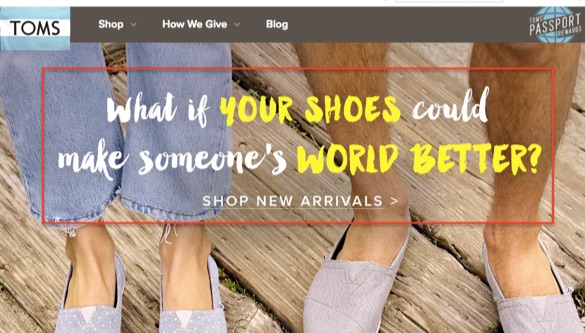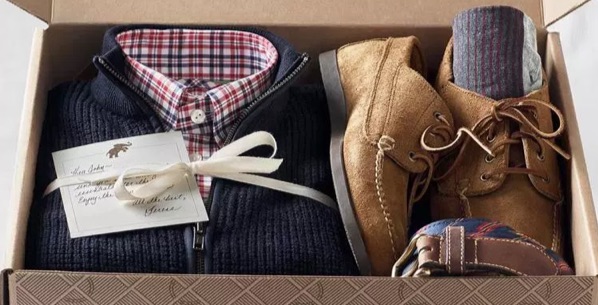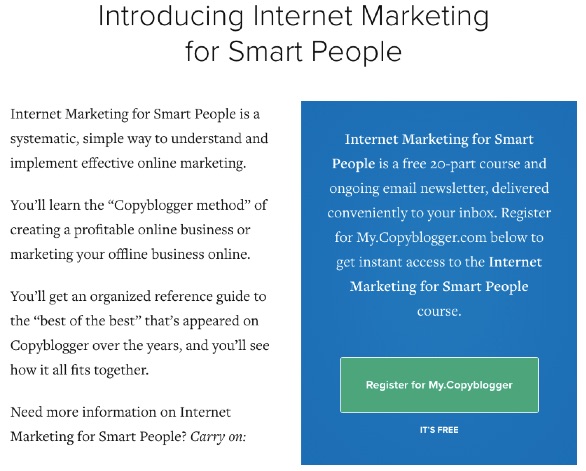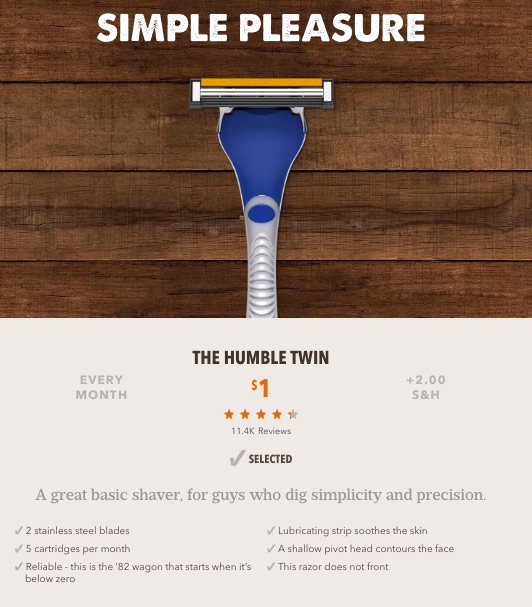Everybody wants loyalty, but not everybody is willing to do what it takes to get it.
Many business owners forget that behind the computer screen is a real, living (and selfish) human being who thinks he or she deserves all the attention in the world and, if you don’t provide it, they’ll bury your brand in the “forgotten businesses graveyard” in less than a New York minute.
There’s way too much competition out there to think your customers will remain loyal forever. Forget it. If you neglect them, they’ll throw you away.
As a die-hard online shopper, here’s the very first piece of advice I can give you:
Customer Loyalty isn’t a purchasable commodity. It’s a present – you can’t force it, but only earn it. That said, here are four psychological triggers that will help you earn that loyalty.
1. Stand For Something
Did you know that people aren’t loyal to companies at all?
No. They’re loyal to what the company stands for.
A popular example is TOMS – also known as “The One For One Company.” They built their entire organization based on the mantra “What if your shoes can make someone better?” which means that, for every purchase you make on their store, TOMS will help a person in need.

One for one – they say.
Tell me. What kind of person would resist to that kind of message? This perfectly explains TOMS’ insanely fast growth.
And TOMS isn’t alone, mention a popular brand, and I’ll see a good positioning strategy behind it. Take Apple as another example. If you read between the lines, you’ll find that they stand for simplicity, innovation, and perfection.
Every single successful company STANDS FOR SOMETHING.
If you want to ingrain in your customers’ minds and stick in there, you need to find something to stand for…or better said…something your audience will want to stand for, too.
Now the question is: How can YOU find what your brand stands for?
To help you start off on the right foot, here are some questions you should ask yourself:
- What do you do? – every single company on the planet knows what they do. If you’re a Marketing agency, you help businesses make more money; if you run a pet supplies store, you help people keep their pets clean and healthy; if you offer a CRM solution, you help companies organize and manage their customer relationships. To find what your brand stands for, you need to know exactly what your brand’s mission is, first.
- How do you do it? – What do you do different from other companies? What differentiates your brand from your competitors? What’s your Unique Selling Proposition?
- Why do you do it? – this is the crucial question. And I’m not talking about money. I mean, why do you do what you do? What’s your purpose? What are your values as an organization? Why does your brand EXIST in the first place? And more importantly, why should anyone care? By answering these questions, you’ll find what your company stands for.
Note: These questions are based on Simon Sinek’s Golden Circle. I highly recommend that you watch his TED talk to understand this concept. It’s vital for your business.
2. Human experience
As I mentioned in the opening, every visitor you get is a real human, not just a number in your Analytics software. Understand this concept, and you won’t go far wrong.
This is the BIG advantage brick-and-mortar businesses have over online companies – they can interact with their buyers face to face. And this kind of interaction increases loyalty.
Just think about the reasons you come back to your favorite restaurant or store over and over again. Having dozens of different options, why do you choose the same places?
The answer is very simple: It’s because the experience you have when visiting them. You feel very human, don’t you?
Well, online experiences shouldn’t be different.
Although you can’t literally provide that face-to-face interaction to your visitors, you can make them feel very human.
For example, Trunk Club – a premium clothing online store – has improved their unboxing experience in a very clever way.
Instead of sending your order in a typical carton box, they send it in a beautifully-crafted, personalized package – and, when you see it, you feel very special; you feel that the company actually cares about you.

This kind of actions give Trunk Club the “human touch” every brand needs to increase loyalty. Just look at their loyal customers singing their praises on Twitter:
@TrunkClub — can't wait to see what Abigail has picked out for me this time!! #excited pic.twitter.com/AdIY0AOEqY
— John Gonda (@FollowGonda) May 18, 2016
Look whose day just got infinitely better! @TrunkClub pic.twitter.com/XNuCqakspV
— Vintee S. (@Vis4Vodka) May 17, 2016
@TrunkClub never lets me down… pic.twitter.com/S6QfDXsZDv
— MOE (@MOE925) April 27, 2016
Thanks again to @TrunkClub for the awesome trunk! And of course shout out to my personal stylist Alexis!! pic.twitter.com/a2GKuRBTBR
— Henry Hoskins (@henryjhoskins) April 14, 2016
Loaded the hubs up with @TrunkClub goodies thanks to the best NYC stylist ever, Miss. McKenzie. pic.twitter.com/uJIjJT4WAB
— KatSaturday (@KattykatNYC) March 2, 2016
Awesome job by my @TrunkClub stylist (weird to type)! Great job Stephanie! pic.twitter.com/zRb4xs3JTF
— Nicholas Provenzano (@thenerdyteacher) February 23, 2016
The bottom line is this:
Instead of just following the crowd and all the boring, recommended business practices, you need to remember that your customers are human, and, therefore, your brand needs to be human, too.
3. Desire to Belong
Let me ask you a question:
Why do people own a Mercedes?
Do you think it’s because its amazing hydraulic suspension system, the premium painting, or even its leather seats?
No way! Cheaper cars offer very competitive features. Why would people spend thousands of extra dollars to buy something that’s just slightly better than other cars? Well, it’s simple. They want status. Believe me, people will do crazy things to keep their status “intact” – like spending their hard-earned money on expensive, yet unnecessary items.
This behavior is called “Conspicuous Consumption,” which refers to the display of wealth for the purpose of acquiring or maintaining status or prestige.
Now you might be thinking:
“Great! But, how can I apply this into my business?”
I’m glad you asked. By labeling your audience, you’re able to trigger this strange, yet powerful desire and use it to your advantage.
Here’s what I mean:
A few years ago, an experiment revealed that people do like being labeled as long as it implies some kind of superior characteristic.
For example, when Volvo discovered that its customer base had one of the highest educational levels within the car manufacturing industry, they immediately publicized the fact. Surprisingly, a few years later, when Volvo conducted the survey again, that percentage increased.
This was caused because other highly educated people wanted to be part of the group of “smart Volvo owners.”
Copyblogger applies something similar on its famous “Internet Marketing For Smart People” Ebook. The simple fact they include the word “smart” entices more people to download it.

Remember, people do like to be labeled and, as a marketer, your task is to awaken that inner desire of belonging in your audience.
Do it, and they’ll remain loyal for a long time.
4. Keep It Simple
The other day, I stumbled upon two astonishing facts:
- 81% of consumers admit that it is frustrating dealing with a company that does not make it easy to do business with them.
- 86% of potential buyers are more likely to make a purchase with brands that simplify the customer journey, according to Harvard Business Review.
Said simpler: Nobody likes complicated stuff. Period.
Sadly, most companies do just that. In hopes of “impressing” their audience, they complicate everything – they use fancy verbiage, complicated business concepts, and even tricky products.
On the other hand, savvier brands ALWAYS simplify the path.
Dollar Shave Club is the perfect example – they simplified the annoying, tedious task of getting out of your comfortable house to buy a new razor. For only $1 per month, they’ll ship 2 stainless steel blades and 5 cartridges to your home every 30 days.

Simple, don’t you think?
Kissmetrics itself applies this principle, too. They understand that managing and interpreting data in Google Analytics can be complicated. So they simplified the process by allowing our users to track people, not only pageviews. Also, Kissmetrics allows you to segment your audience based on users behavior. This way, you can track and retain your best customers.
As a matter of fact (and in case you didn’t know it), the “kiss” in the Kissmetrics name stands for “Keep it simple software.”
We’re all about simplicity.
Remember, NOBODY will ever complain about that your brand, product, or process is too simple.
Over to you…
Here’s one last stat:
According to the authors of Loyalty Myths, it costs five times more to acquire a customer than to retain a customer.
The bottom line?
Loyalty pays off. And now you have four scientifically proven ways to get it from your customers.
But it’s over to you.
Anyways, what are some other tips you can share about the topic? I’d love to hear your thoughts.
About the Author: Josue Valles is a content marketing evangelist, strategist and die-hard entrepreneur. He constantly blogs about Inbound Marketing, SEO and Social Media Marketing at Engagebit. You can also follow him on Twitter.
No comments:
Post a Comment